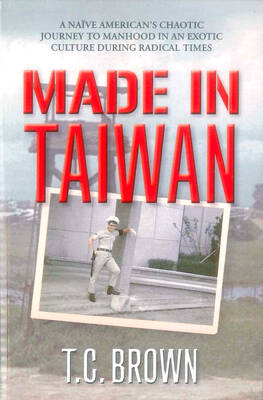Developing games for major consoles such as the Sony PlayStation, Microsoft Xbox and Nintendo Wii has traditionally been the domain of professionals. Independent, student or hobbyist game developers have always been more or less locked out from the exciting world of console development. To work on the big machines requires enough clout and funds to afford development kits and licenses and secure an agreement. But Microsoft has completely obliterated these barriers to entry with a solution called XNA Game Studio.
XNA Game Studio 3.0, released just over a month ago, is a completely free set of tools for creating computer games. Touted as “easy-to-use, approachable tools for hobbyists, academics and indie game developers,” XNA is able to produce commercial-grade games for the Xbox 360, Windows PC and even the Microsoft Zune handheld device.
Once a game has been developed, it can be submitted to Xbox Live, an online gaming and entertainment service run by Microsoft, as a “Community Game,” a new section of Xbox Live for games made using XNA Game Studio. This means that once a game is accepted and processed, it will be available to anyone who has an Xbox 360 linked to the Internet. Developers who submit games can select their own price (or make their game free) and receive 70 percent of the proceeds from sales.
Microsoft has now opened up the world of commercial game development, publishing and distribution. It has removed all costs from the process and given developers a top-notch set of tools and a decent cut of the profits. So what’s the snag? Well, there really isn’t one to speak of — developers will need an Xbox 360 machine to ultimately play test and submit their game, and they will need to pay the XNA Creators Club membership fee (US$100 per year), but after that the game will be available on Xbox Live in the Community Games section.
This is a quantum leap in terms of console development support and a very exciting one too — the only barrier to entry left is the skill set required. Developing games is never going to be easy per se, considering a commercial game requires programmers, artists, musicians and 3D modelers — each of these is a career in itself. However, for existing independent game studios (or hobbyists) who are developing for mobile phones, personal computers, etc, already, XNA could be the perfect solution. Since it supports the very Java-like and already popular C# programming language, as well as all of the de facto standards in 3D graphics, independent studios should be able to move over to using XNA relatively painlessly. The main incentives for doing this, of course, are access to the global market, high profit share and effortless distribution, all of which are handled by Microsoft.
For aspiring game designers there has never been a better time to start. The Xbox 360’s hardware is incredibly powerful, incorporating a state-of-the-art graphics processing unit, or GPU, as well as a multi-core central processing unit, or CPU, which makes it more or less the same power as a PlayStation 3 or high-specification PC. The fact that XNA Game Studio can output an Xbox 360 version and a Windows PC version with no extra effort further simplifies the process — not to mention the ability to also output for the Zune handheld — as usually companies will take at least half a year to move their console games over to the PC or vice versa, and a lot longer to make a handheld version.
In conclusion, Microsoft’s XNA Game Studio has virtually no drawbacks if you already have some knowledge in programming or game development. If not, the abstraction level has simplified things more than ever, meaning there has never been a better time to dip your toe in the water. Considering the price tag of zero and the wealth of tutorials on the Net, it’s surely worth checking out.
— GARETH MURFIN IS A FREELANCE
DEVELOPER AND CONSULTANT
WWW.GARETHMURFIN.CO.UK

By 1971, heroin and opium use among US troops fighting in Vietnam had reached epidemic proportions, with 42 percent of American servicemen saying they’d tried opioids at least once and around 20 percent claiming some level of addiction, according to the US Department of Defense. Though heroin use by US troops has been little discussed in the context of Taiwan, these and other drugs — produced in part by rogue Chinese Nationalist Party (KMT) armies then in Thailand and Myanmar — also spread to US military bases on the island, where soldiers were often stoned or high. American military policeman

Under pressure, President William Lai (賴清德) has enacted his first cabinet reshuffle. Whether it will be enough to staunch the bleeding remains to be seen. Cabinet members in the Executive Yuan almost always end up as sacrificial lambs, especially those appointed early in a president’s term. When presidents are under pressure, the cabinet is reshuffled. This is not unique to any party or president; this is the custom. This is the case in many democracies, especially parliamentary ones. In Taiwan, constitutionally the president presides over the heads of the five branches of government, each of which is confusingly translated as “president”

An attempt to promote friendship between Japan and countries in Africa has transformed into a xenophobic row about migration after inaccurate media reports suggested the scheme would lead to a “flood of immigrants.” The controversy erupted after the Japan International Cooperation Agency, or JICA, said this month it had designated four Japanese cities as “Africa hometowns” for partner countries in Africa: Mozambique, Nigeria, Ghana and Tanzania. The program, announced at the end of an international conference on African development in Yokohama, will involve personnel exchanges and events to foster closer ties between the four regional Japanese cities — Imabari, Kisarazu, Sanjo and

Sept. 1 to Sept. 7 In 1899, Kozaburo Hirai became the first documented Japanese to wed a Taiwanese under colonial rule. The soldier was partly motivated by the government’s policy of assimilating the Taiwanese population through intermarriage. While his friends and family disapproved and even mocked him, the marriage endured. By 1930, when his story appeared in Tales of Virtuous Deeds in Taiwan, Hirai had settled in his wife’s rural Changhua hometown, farming the land and integrating into local society. Similarly, Aiko Fujii, who married into the prominent Wufeng Lin Family (霧峰林家) in 1927, quickly learned Hoklo (commonly known as Taiwanese) and